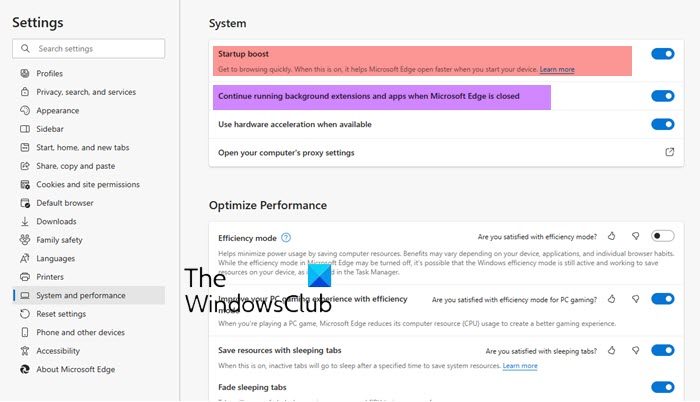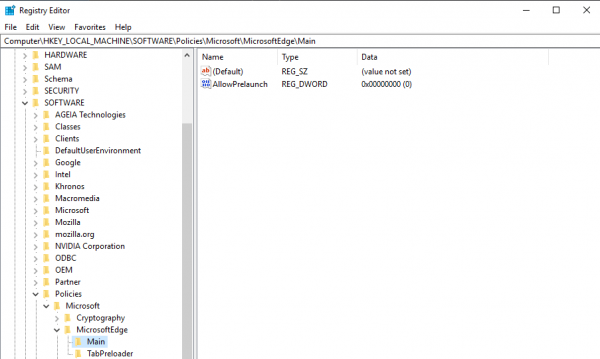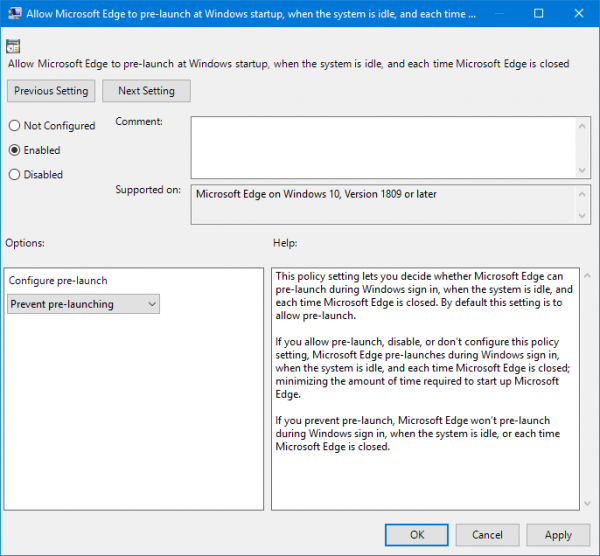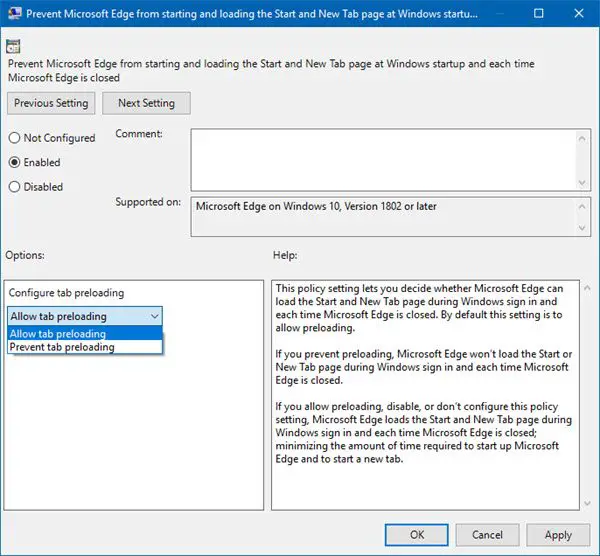Since its release, Microsoft has been pushing users to give Microsoft Edge Chromium a try and probably make it their primary browser since always. In several claims, they have also shown it is more battery and hardware-resource-friendly when compared to other leading web browsers in the market.
But have you ever noticed that when you launch Microsoft Edge at any given time, it loads faster as compared to when you launch other browsers? Microsoft is preloading Microsoft Edge on Windows 11/10 on startup. This, in reality, affects the startup time of the whole operating system overall.
There seem to be at least three processes related to Microsoft Edge in the Task Manager – MicrosoftEdge.exe, MicrosoftEdgeCP.exe, and MicrosoftEdgeSH.exe. Though it shows them as suspended, they are already loaded in the background.
Today, we will show you how to stop Edge browser from pre-loading on Startup on Windows 11/10. This can be useful if you do not use Microsoft Edge at all.
Note: I use Microsoft Edge, and I would recommend the reader give it a try.
Stop Microsoft Edge from loading on Startup in Windows 11/10

To stop Microsoft Edge from pre-loading on startup in Windows 11/10:
- Launch Edge browser
- Open Settings and more
- Select Settings
- In the right panel, select Systems and performance
- Turn off Continue running background apps when Microsoft Edge is closed.
- Also, turn off Startup boost
- Restart Edge.
If this does not help, try the REGEDIT or GPEDIT way. As always, I would recommend making a System Restore point just in case you can roll back to current state if something goes wrong.
Stop Windows from preloading Edge using Registry Editor
It is worth noting that this method works for all editions of Windows, including Windows 11/10 Home.
First, start by hitting the WINKEY + R button combination to launch the Run utility. Now type in regedit and hit Enter.
Now, navigate to the following key location inside of the Registry Editor,
HKEY_LOCAL_MACHINE\SOFTWARE\Policies\Microsoft\MicrosoftEdge\Main
Right-click on the folder called Main.

Then select New > DWORD (32-bit) from the context menu.
Set its name to AllowPrelaunch. Double-click on the newly created DWORD and set its Value to 0.
Now, navigate to the following key location-
HKEY_LOCAL_MACHINE\SOFTWARE\Policies\Microsoft\MicrosoftEdge\TabPreloader
Right-click on the folder called TabPreloader. Then select New > DWORD (32-bit) from the context menu and set its name to AllowTabPreloading.
Double-click on the newly created DWORD and set its Value to 0.
Stop Edge from loading on Startup using Group Policy Editor
Start by hitting the WINKEY + R button combination to start the Run box and type in gpedit.msc and then finally hit Enter.
Now, navigate to the following path inside the Group Policy Editor-
Local Computer Policy > Computer Configuration > Administrative Templates > Windows Components > Microsoft Edge
Double-click on the configuration listing named as Allow Microsoft Edge to pre-launch at Windows startup, when the system is idle, and each time Microsoft Edge is closed to open the configuration page.
This policy setting lets you decide whether Microsoft Edge can pre-launch during Windows sign in, when the system is idle, and each time Microsoft Edge is closed. By default this setting is to allow pre-launch. If you allow pre-launch, disable, or don’t configure this policy setting, Microsoft Edge pre-launches during Windows sign in, when the system is idle, and each time Microsoft Edge is closed; minimizing the amount of time required to start up Microsoft Edge. If you prevent pre-launch, Microsoft Edge won’t pre-launch during Windows sign in, when the system is idle, or each time Microsoft Edge is closed.

Select Enabled radio button and from the drop-down below, select Prevent Prelaunching to prevent Microsoft Edge from Prelaunching.
Click on OK. Reboot your computer for the changes to take effect.
If you wish to revert this and allow Microsoft Edge to prelaunch on Windows startup, just select either Not Configured or Disabled.
Or, if you are running later releases of Windows, the configuration listing will say Prevent Microsoft Edge from starting and loading the Start and New Tab page at Windows startup and each time Microsoft Edge is closed.
This policy setting lets you decide whether Microsoft Edge can load the Start and New Tab page during Windows sign in and each time Microsoft Edge is closed. By default this setting is to allow preloading. If you prevent preloading, Microsoft Edge won’t load the Start or New Tab page during Windows sign in and each time Microsoft Edge is closed. If you allow preloading, disable, or don’t configure this policy setting, Microsoft Edge loads the Start and New Tab page during Windows sign in and each time Microsoft Edge is closed; minimizing the amount of time required to start up Microsoft Edge and to start a new tab.

In this case, click on the radio button labeled as Enabled.
In the configuration drop-down menu, select Prevent tab preloading.
Finally, click on OK.
Reboot your computer for the changes to take effect.
This GPEDIT method would not work if you are running Windows Home Edition.
This tip would be useful if you do not use Edge as your default browser.